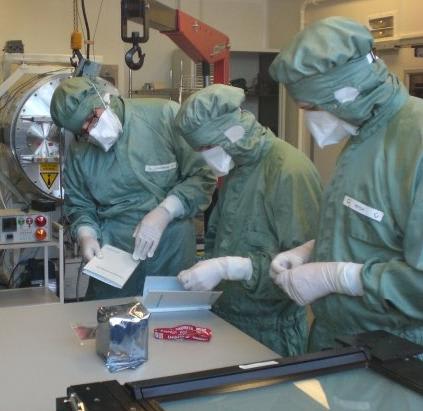Tale of a Cubesat
My first attempt at producing space hardware did not make it to space, but was an amazing educational experience.
When I was an undergraduate studying physics at the University of Leicester, I participated in a cubesat project called “Plume”. It was a 1U satellite - a simple cube 10cm on each side - and its scientific payload was a cosmic dust detector.

This was around 2009, a time when few cubesats had been launched and fewer had carried serious payloads. There were dozens of students recruited for the project, although many quit or didn’t turn up much. The available labour would drop off around exam time, for understandable reasons, and then dry up almost entirely during the summer as students went home. Fortunately there were some, like me, who lived full time in the city and were able to continue with the project over this time.
We received some outside help - the Space Research Centre at the university, which has now become Space Park Leicester, let us use their clean room, and provided vital guidance. We had some contacts with industry, and the National Space Centre had arranged to provide us with a ground station to communicate with it.
Ultimately, however, we were not able to complete the satellite or launch it. I’ll get into the reasons why, but even without finishing it the project was incredibly valuable to myself and other students in the department.
Building the Computer
We divided the mission into subsystems, and due to my prior experience as a programmer I was in charge of OBDH (On Board Data Handling). We started from a kit - a main board ready mounted in an appropriately sized aluminium cube.
In addition, there was a larger development board which was kept in the department. Sadly I do not have any photos of this or the setup we attached it to - this is roughly the modern equivalent of what we got, but looks different. The department granted us a small room, and an old logic analyser (older, in fact, that almost all of the team members) and we were able to get to work programming.
Driving the board was an MSP430 microcontroller - 16 bit, no floating point, and only 56kb of memory. By modern standards is an incredibly constrained programming environment, but the merit of it was its very low power requirements. We weren’t deploying any solar panels, so the only power we would have would be from surface mounted panels on each face of the cube, and to account for eclipses only half this would be available as the other half would be charging batteries while the satellite was in sunlight.
Keep reading with a 7-day free trial
Subscribe to Planetocracy to keep reading this post and get 7 days of free access to the full post archives.


